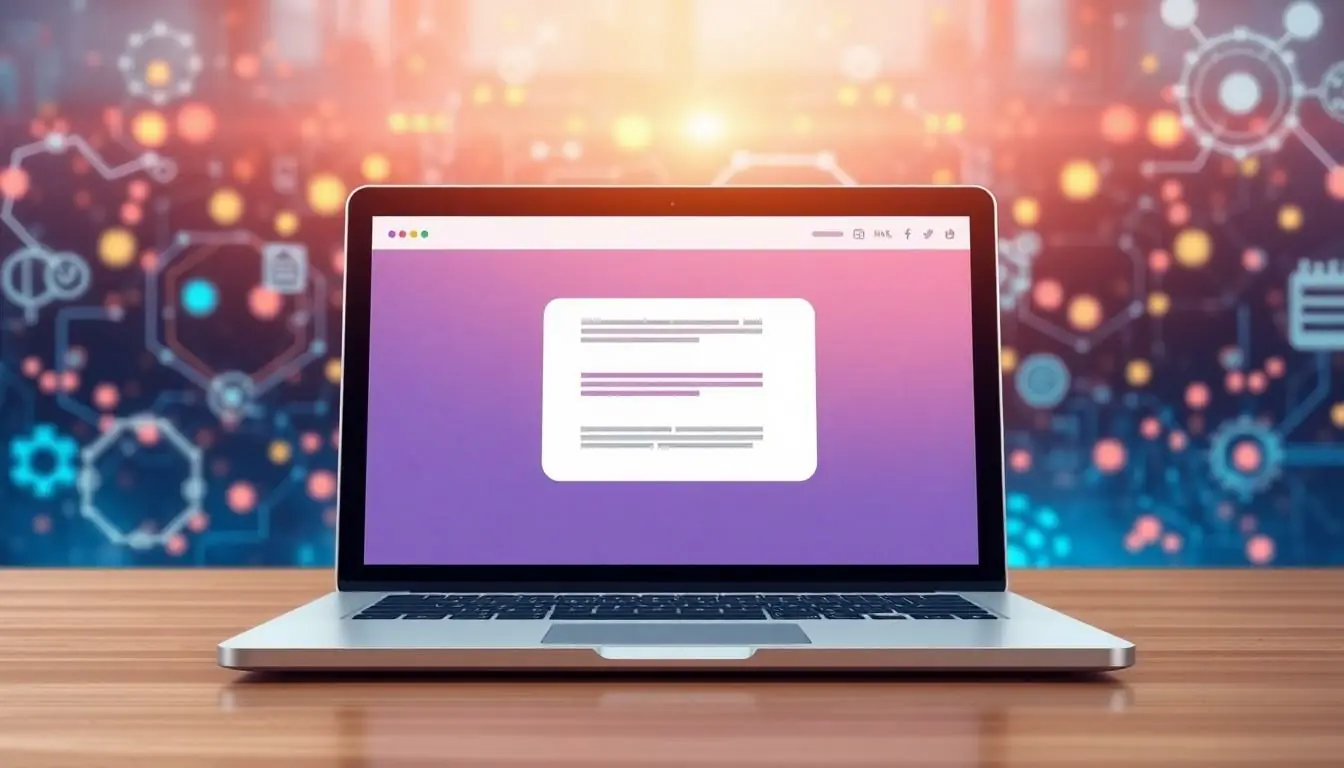Table of Contents
ToggleIn the ever-evolving world of technology, names can be as puzzling as a cat trying to catch its own tail. Enter ChatGPT—a name that might sound like a secret code or a quirky character from a sci-fi movie. But what exactly is ChatGPT called, and why should anyone care? Spoiler alert: it’s not just a fancy name for a chatbot that tells dad jokes.
Overview of ChatGPT
ChatGPT represents an advanced language model designed by OpenAI. This technology performs various tasks such as answering questions and producing written content based on user prompts. Users benefit from its ability to generate human-like text, making interactions feel natural and engaging.
Different versions of ChatGPT exist, including fine-tuned iterations that enhance its ability to understand context deeply. The model is built on the GPT architecture, specifically evolving from the earlier Generative Pre-trained Transformer versions. Researchers continue to focus on improving this model, refining its performance for more effective communication.
Applications span multiple domains. Businesses utilize ChatGPT for customer support, automating responses to frequently asked questions. In education, students leverage it to aid in learning, obtaining explanations on complex topics. Content creators often rely on ChatGPT for brainstorming ideas or generating drafts.
Understanding the underlying technology is vital. The model processes input text, predicting subsequent text chunks based on patterns learned from vast data sets. This training enables it to produce coherent sentences while varied in style and complexity.
ChatGPT’s user interface is simple yet powerful. Users input prompts, and the model quickly generates responses that align with the context provided. Real-time interaction encourages dynamic dialogue, shaping the experience based on user needs.
Numerous challenges persist, such as ensuring responses are accurate and contextually appropriate. As it evolves, developers work diligently to address biases and enhance the model’s decision-making processes. Optimizing ChatGPT continues to be a priority as its importance in various sectors grows.
The Name “ChatGPT”

ChatGPT combines “chat” and “GPT.” This reflects its primary function as a conversational AI model powered by the Generative Pre-trained Transformer architecture developed by OpenAI.
Origin of the Name
The name “ChatGPT” derives from its focus on interactive dialogue. “Chat” emphasizes the model’s conversational capabilities. GPT, representing Generative Pre-trained Transformer, indicates the underlying technology that enables it to generate coherent text. OpenAI created GPT to process language efficiently, training it on diverse datasets. Thus, “ChatGPT” signifies a system adept at both understanding and producing human-like text through engaging discussions.
Significance of the Name
The name “ChatGPT” holds considerable significance in conveying its purpose. It highlights the model’s role in enhancing communication between users and machines. Clarity in communication stands as a crucial factor, given the model’s applications in various sectors like customer service, education, and content creation. Users recognize “Chat” as a prompt for conversational interaction, while “GPT” denotes the advanced technology behind its robust performance and delivery. Such naming emphasizes the model’s innovative approach within the AI landscape, denoting both utility and technological advancement.
How ChatGPT Works
ChatGPT operates through a sophisticated blend of technology and design. Understanding its mechanics provides insight into its capabilities and potential.
Underlying Technology
Generative Pre-trained Transformer architecture forms the core of ChatGPT. This architecture facilitates the model’s ability to analyze input text and generate contextually relevant responses. By training on extensive datasets, it learns language patterns and nuances, making its outputs impressive and human-like. Each version of ChatGPT builds on previous iterations, enhancing contextual understanding and improving overall performance. With fine-tuning processes in place, models adapt to specific tasks better, thereby increasing accuracy and relevance in dialogue.
Applications of ChatGPT
The versatility of ChatGPT leads to its use across diverse fields. Businesses employ it for customer support, improving response times and customer satisfaction. Educational institutions benefit from its capacity to assist students with explanations and tutoring. Content creators find value in brainstorming ideas and drafting articles, streamlining their writing processes. Beyond these sectors, developers continually explore new applications, indicating the model’s flexibility and growing importance in various industries.
Common Misunderstandings
Misunderstandings about ChatGPT often stem from its complex technology and varied applications. Clarity is essential in navigating these misconceptions effectively.
Myths About ChatGPT
Many people think ChatGPT is just a basic chatbot. This perception overlooks its advanced capabilities as an AI language model. Some assume it cannot produce creative content, yet it excels at drafting articles, stories, and more. Misinterpretations also include beliefs that the model can browse the internet for real-time information. In reality, it generates responses based on pre-existing data, lacking real-time awareness or updates.
Clarifying Terminology
Understanding terms associated with ChatGPT helps demystify its functionalities. The term “Generative Pre-trained Transformer” refers to a specific type of AI architecture used for natural language processing. “Chat” signifies its primary function of engaging in conversation. AI enthusiasts sometimes confuse ChatGPT with general chatbots, but it stands apart due to its sophisticated ability to understand context and generate coherent text. Establishing these distinctions enriches comprehension of ChatGPT’s role in technology today.
ChatGPT stands as a remarkable example of how advanced AI can transform communication. Its name reflects its dual purpose of engaging conversation and utilizing sophisticated technology. As it continues to evolve through various iterations and applications, its impact on industries like customer service and education becomes increasingly significant.
Understanding ChatGPT’s capabilities helps to dispel common myths and highlights its role as more than just a simple chatbot. With ongoing improvements in accuracy and contextual understanding, ChatGPT is poised to further enhance interactions between users and machines. Embracing this technology opens new avenues for creativity and efficiency across multiple sectors.








